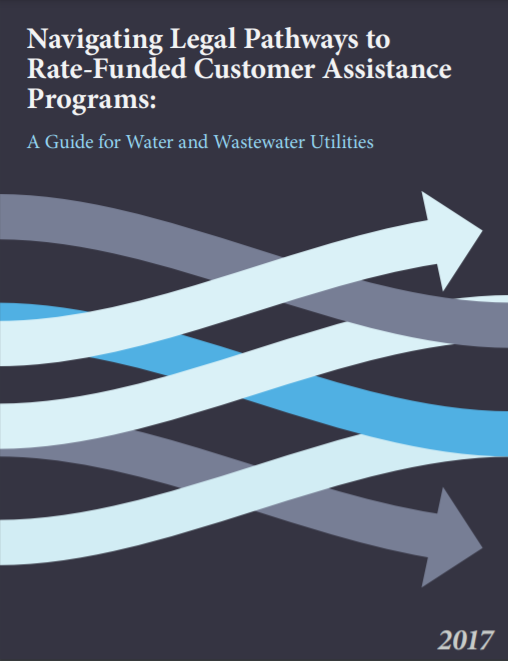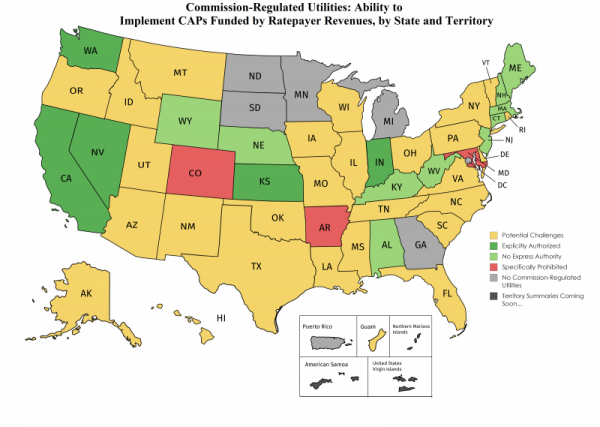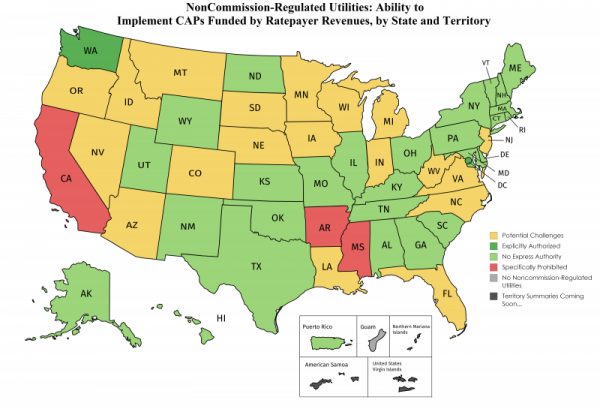Although historically underpriced, water and wastewater rates in some parts of the United States are increasing sharply. While the rate increases are necessary to address infrastructure funding needs and make up for lower per capita water use, higher rates also mean that a larger percentage of customers are finding paying for water and wastewater service a financial burden.
The Affordability Challenge
In order to keep rates at a realistic level for their main customer base, many water and wastewater utilities are considering ways to assist their low-income customers. The options available to a utility that wants to address this equity issue differ depending on the state. A few state statutes, for example, are very prescriptive that a utility can, and in some cases “should” provide low-income assistance, but most states have more ambiguous language or leave more up to the discretion of the utility itself. A further complication is that some state utility regulatory commissions treat public versus private investor-owned utilities differently when it comes to bill-paying customer assistance programs (CAPs). This makes for a challenging environment for a utility that wants to respond to the business and altruistic concerns over low-income customers.
Much has been published on the general topic of affordability and the programs designed to make it easier from rate revenues for low-income households to pay for their water and wastewater services. However, so far there has been little guidance on the legal framework influencing the feasibility of rate revenue funded CAPs in different states.
Guide (2017): Navigating Legal Pathways to Rate-Funded Customer Assistance Programs
Download the guidance document.
This guide summarizes the principal legal barriers and opportunities to establishing a bill-paying assistance program for low-income water and wastewater utilities in each of the 50 states, as well as Puerto Rico and the District of Columbia. Whether utilities can fund such customer assistance programs from water and wastewater revenues generated by their customers depends on state laws. Several case studies at the utility level highlight how customer assistance programs are funded in light of the relevant state regulations. The guide also includes potential model programs from other utility sectors, as well as potential model programs internationally.
Please note, the maps and state summaries are not being updated in the guide, published in 2017. Updates are provided in the Updates to States and Territories Summaries below.
Led by the EFC, the research and project team included Abt Environmental Research, Corona Environmental Consulting, as well as prominent advisors, Roger Colton and Scott Rubin.
Updates to States and Territories Summaries
Last updated 11/1/2018. All links open PDF files.
Tool: Bill Payment Assistance Program Cost Estimation for Water Utilities
This spreadsheet guides water/wastewater utility staff in estimating the costs of implementing a program to assist low-income residential customers pay their bills. Follow the step-by-step instructions to estimate the income distribution of households in the utility service areas and choose from different eligibility and program designs. Read more and download the tool.
Tool: Residential Rates Affordability Assessment Tool
Many utilities considering developing a customer assistance program are unsure about whether they even have an affordability problem. The EFC has developed this spreadsheet which uses various types of Census data to help assess the level of affordability in a specific community. Read more and download the tool.
A State-by-State Analysis
The following map categorizes each state according to one of four categories based on the level of authorization for rate-funded CAPs. Designating a state to one of these four categories involved a methodical process, but was also subjective to some extent: part science and part art. Utilities regulated by state commissions tend to have a different level of authority on rate-funded CAPs compared to utilities not regulated by the commission in a given state. In addition to the 52 state summaries, nine utility-level case studies have also been developed to illustrate some of the findings derived from the legal summaries around the nation. Some of these utilities use funding other than rate revenues, whereas others demonstrate innovative ways of creating alternative pathways to somehow address or confront the ambiguity in their relevant state’s statutes.
Please note, maps and state summaries are updated periodically. All updates will NOT be showcased in the report, the most updated maps and state summaries are located below.
To receive notifications of state summary updates, please subscribe to our email list.
Alaska
Arizona
Arkansas
California
Colorado
Connecticut
Delaware
Florida
Georgia
Hawaii
Idaho
Illinois
Indiana
Iowa
Kansas
Kentucky
Download The Resource







